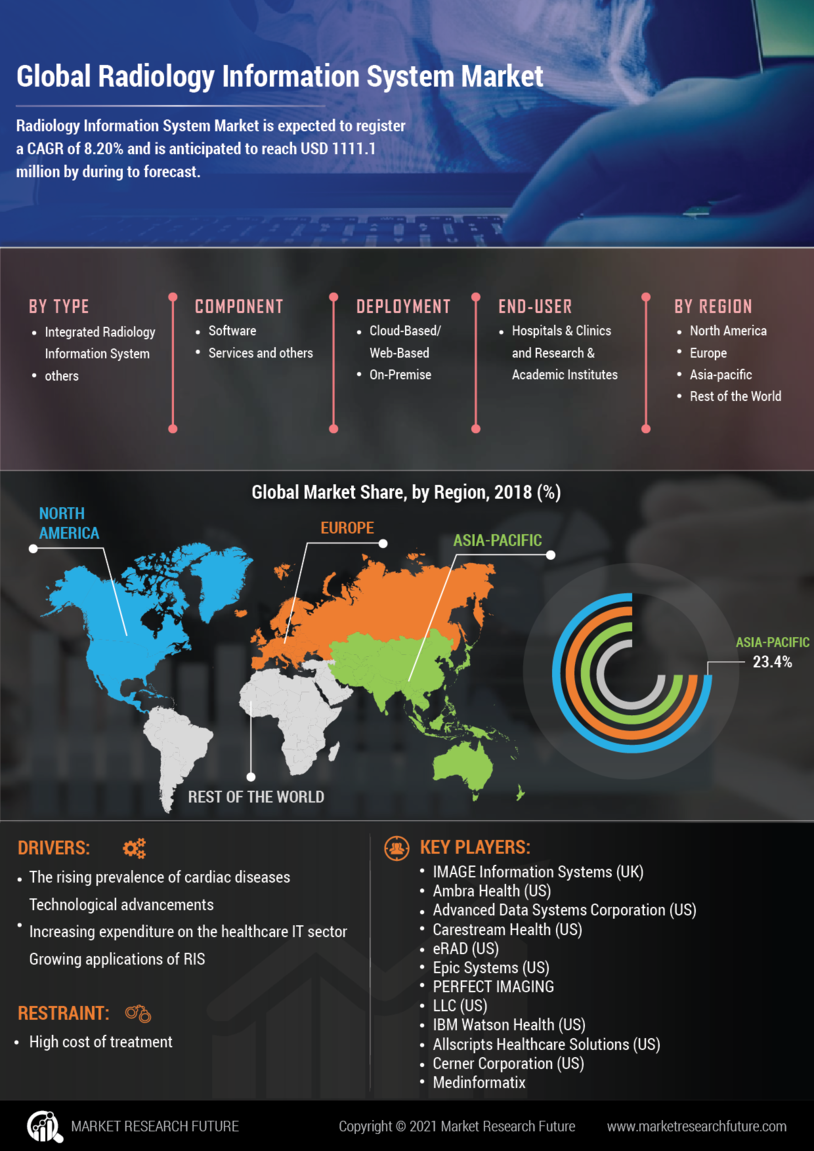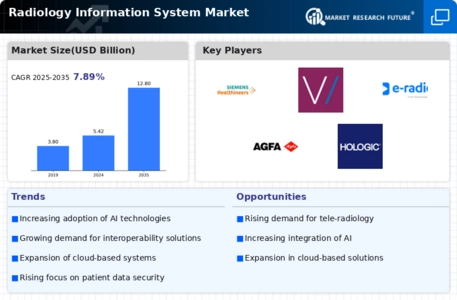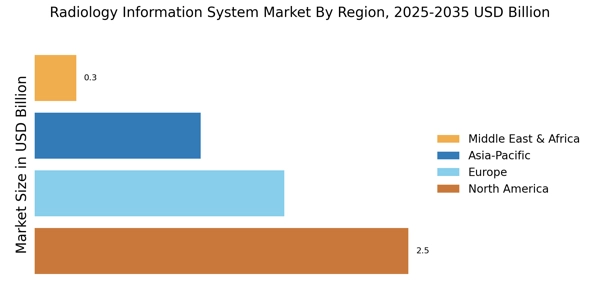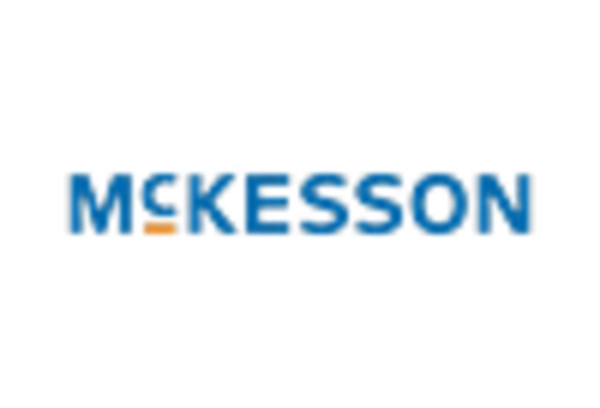The Radiology Information System Market is currently characterized by a dynamic competitive landscape, driven by technological advancements and an increasing demand for efficient healthcare solutions. Major players such as Siemens Healthineers (DE), GE Healthcare (US), and Philips Healthcare (NL) are at the forefront, each adopting distinct strategies to enhance their market positioning. Siemens Healthineers (DE) emphasizes innovation through the integration of artificial intelligence in their imaging solutions, aiming to improve diagnostic accuracy and workflow efficiency. Meanwhile, GE Healthcare (US) focuses on strategic partnerships and collaborations to expand its product offerings and enhance interoperability across healthcare systems. Philips Healthcare (NL) is actively pursuing digital transformation initiatives, leveraging cloud-based solutions to facilitate remote access to radiology data, thereby enhancing patient care and operational efficiency.
The business tactics employed by these companies reflect a concerted effort to optimize operations and adapt to market demands. Localizing manufacturing and optimizing supply chains are prevalent strategies, allowing companies to respond swiftly to regional needs and regulatory requirements. The market structure appears moderately fragmented, with a mix of established players and emerging startups, each contributing to a competitive environment that fosters innovation and responsiveness to customer needs.
In August 2025, Siemens Healthineers (DE) announced the launch of its new AI-driven radiology platform, which aims to streamline workflows and enhance diagnostic capabilities. This strategic move underscores the company's commitment to leveraging cutting-edge technology to address the evolving needs of healthcare providers. By integrating AI into their systems, Siemens Healthineers (DE) positions itself as a leader in the digital transformation of radiology, potentially setting new standards for efficiency and accuracy in diagnostics.
In September 2025, GE Healthcare (US) entered into a partnership with a leading telehealth provider to enhance remote diagnostic capabilities. This collaboration is significant as it aligns with the growing trend towards telemedicine, allowing healthcare professionals to access radiology services remotely. By expanding its reach through strategic alliances, GE Healthcare (US) not only enhances its service offerings but also strengthens its competitive position in a rapidly evolving market.
In July 2025, Philips Healthcare (NL) unveiled a new cloud-based radiology information system designed to improve data accessibility and collaboration among healthcare teams. This initiative reflects the company's focus on digital solutions that facilitate seamless communication and data sharing, which are critical in today’s healthcare environment. By prioritizing cloud technology, Philips Healthcare (NL) is likely to enhance its competitive edge, appealing to healthcare providers seeking efficient and integrated solutions.
As of October 2025, the competitive trends in the Radiology Information System Market are increasingly defined by digitalization, sustainability, and the integration of artificial intelligence. Strategic alliances are playing a pivotal role in shaping the landscape, enabling companies to pool resources and expertise to drive innovation. Looking ahead, it appears that competitive differentiation will increasingly hinge on technological advancements and supply chain reliability, rather than solely on price. This shift suggests a future where innovation and quality will be paramount in determining market leadership.


















Leave a Comment